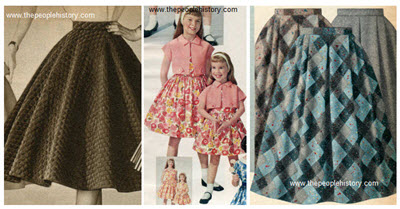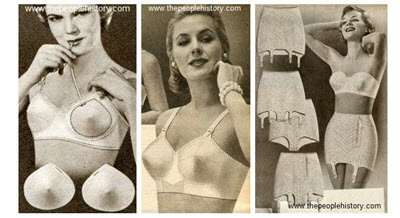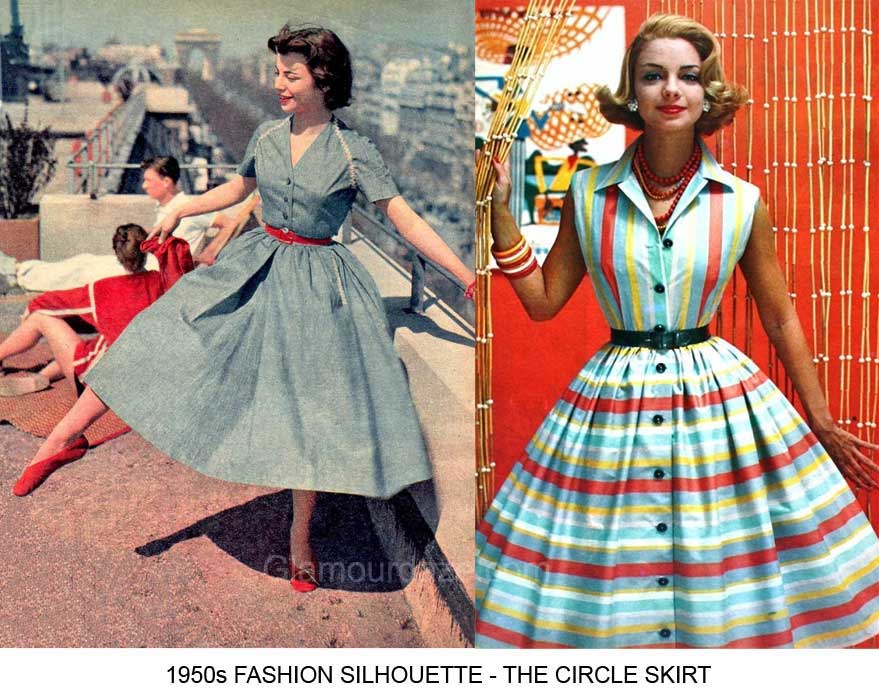1950s ladies fashion is famous for small waists, hourglass figures, big skirts, bright colour schemes and patterned fabric. However there are two sides to every story, because not every women dressed in big, bright dresses all the time. People no longer felt like they needed to conform to specific fashion trends, and therefore had a new found freedom when it came to fashion.
"The phrase “the wandering waistline” was coined at the Paris spring collections and the waist continued to wander to the point of disappearing, throughout the year. 1953 ushered in a mood of sleek, slender elegance — at once young and sophisticated. Hemlines, waistlines and hairlines all grew shorter in 1953. Buzzwords at the time were “shape” and “sheen.”"
http://www.retrowaste.com/1950s/fashion-in-the-1950s/
Due to the rationing during the war, clothes were kept very simple: plain fabrics, basic designs with no embellishment. So when the rationing ended...Design was back! Colours, pattern, lots of fabric, lots of design and influence from other decades.
Men had come back from the war, meaning lots of women were back to being housewives. This meant that marketing was targeted at women, claiming to help them please their husbands or even get a husband! This of course brought on the baby boom.
While there was a freedom to fashion choices, there was also a conformity to how women should look. They were persuaded that the ideal body shape was a thin waist with defined hips and a large but very defined, shapely bust.
"Women's dresses in particular exploded with excess fabric, showing off intricate gatherings, a multitude of pleats, poofy petticoats, and fabulous collars, all made of the best taffeta, nylon, rayon, wool and leather in the brightest and boldest patterns and colors."
http://www.thepeoplehistory.com/50sclothes.html
Rise of 'ready to wear' fashion, garments being mass produced, better quality cloth and manufacturing.
Fashion more suited to teenagers was starting to come about - full skirts, tight tops, capris and flat shoes, all suitable for jive dancing!
Also the "Sweater Girl" look was popular, wearing a bullet bra underneath a jumper, to make the bust really stand out.
Style icons such as Marilyn Monroe, Audrey Hepburn, Grace Kelly, Elizabeth Taylor and Bettie Page.
Coco Chanel became a more well known name in 1957.
Often a small waistband of a contrasting colour was worn with dresses to really emphasise the small waists.
^ Kind of Grease style, some stereotypical fashion of the time

























































